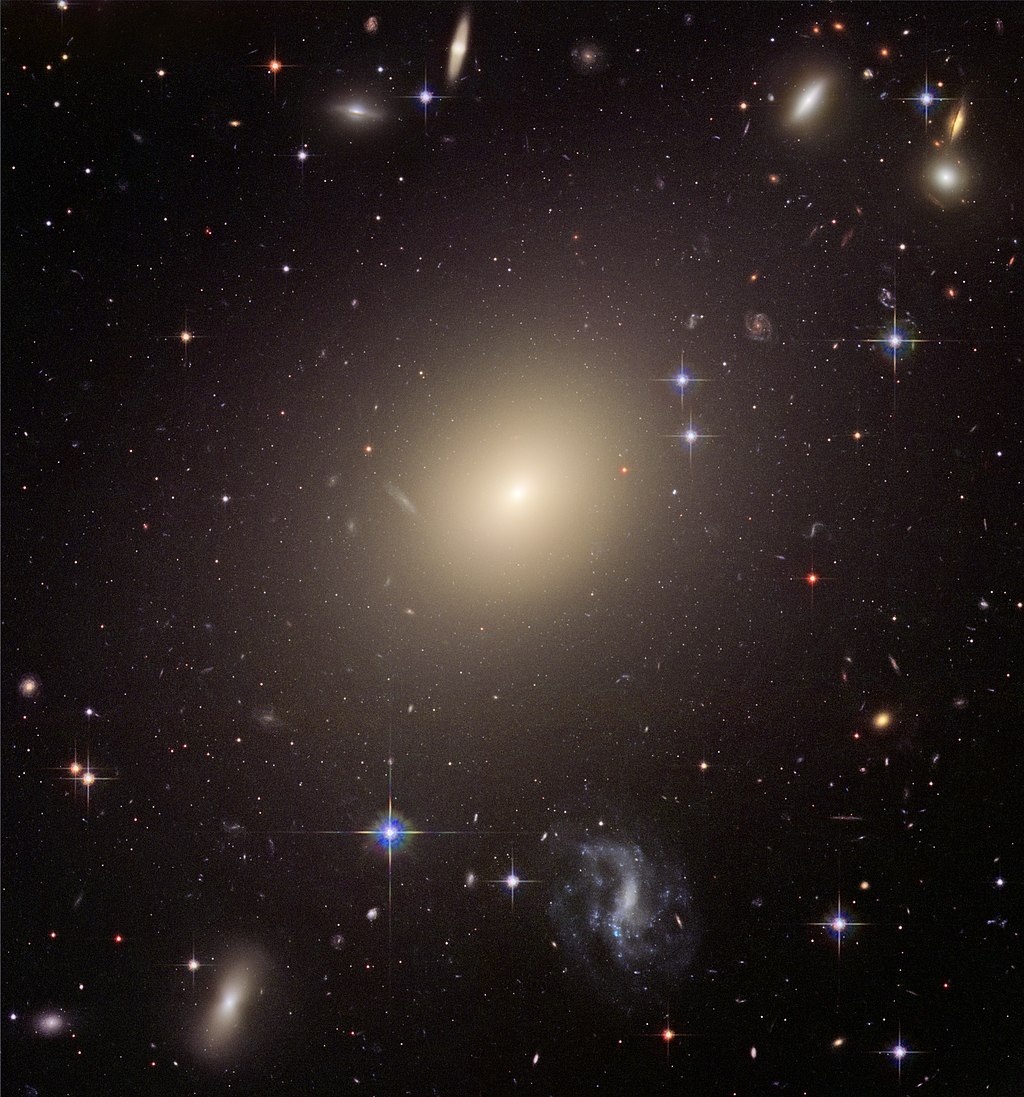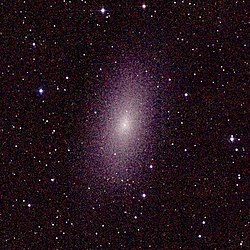Abell S740, cropped to ESO 325-G004
The giant elliptical ESO 325-G004 looms large at the cluster's center. The galaxy is as massive as 100 billion of our suns. Hubble resolves thousands of globular star clusters orbiting ESO 325-G004. Globular clusters are compact groups of hundreds of thousands of stars that are gravitationally bound together. At the galaxy's distance they appear as pinpoints of light contained within the diffuse halo.
Other fuzzy elliptical galaxies dot the image. Some have evidence of a disk or ring structure that gives them a bow-tie shape. Several spiral galaxies are also present. The starlight in these galaxies is mainly contained in a disk and follows along spiral arms.
This image was created by combining Hubble science observations taken in January 2005 with Hubble Heritage observations taken a year later to form a 3-color composite. The filters that isolate blue, red and infrared light were used with the Advanced Camera for Surveys aboard Hubble.Relevante Bilder
Relevante Artikel
Elliptische GalaxieEine elliptische Galaxie ist eine Galaxie, die sich von anderen Galaxienformen in der Hubble-Sequenz durch ihre gleichmäßige Lichtverteilung und das Fehlen auffälliger Strukturen wie in Spiralgalaxien unterscheidet. Elliptische Galaxien gehören zu den ältesten Sternpopulationen im Universum. Man geht inzwischen davon aus, dass sie schon verschiedene Verschmelzungs- und Wechselwirkungsprozesse mit anderen Galaxien hinter sich haben. Sie bestehen in der Regel aus alten Sternen und enthalten kaum interstellares Gas, da dieses bereits vor langer Zeit aufgebraucht worden ist. Daher ist die Sternentstehungsrate sehr gering. Diese Galaxien sind umgeben von einer großen Anzahl von Kugelsternhaufen. Der Massebereich der elliptischen Galaxien beginnt bei kleinen Zwerggalaxien mit wenigen Millionen Sonnenmassen und erreicht bei zentralen Haufengalaxien Werte von bis zu mehreren Billionen Sonnenmassen. In einem Umkreis von ca. 30 Millionen Lichtjahren um die Milchstraße sind ca. 34 Prozent der Galaxien Spiralen, 13 Prozent Ellipsen und 53 Prozent irreguläre Galaxien und Zwerggalaxien. .. weiterlesen










